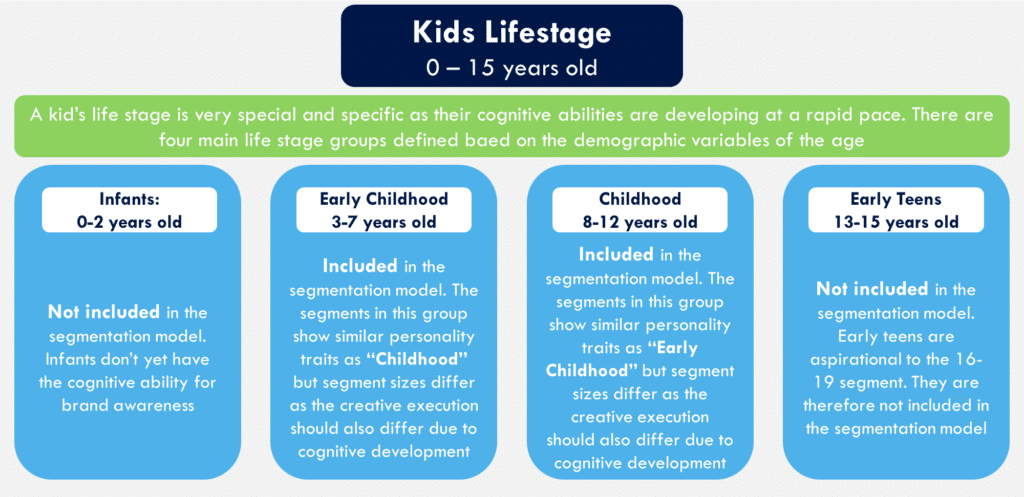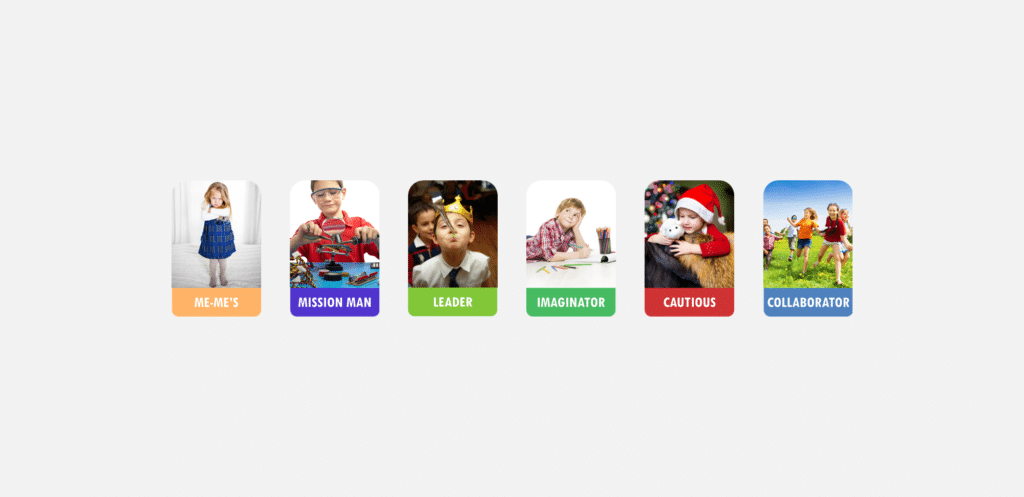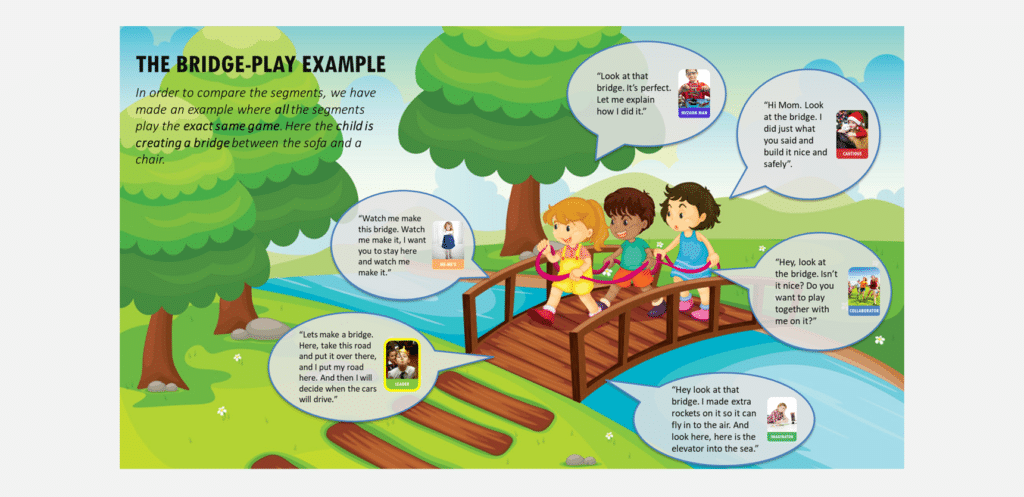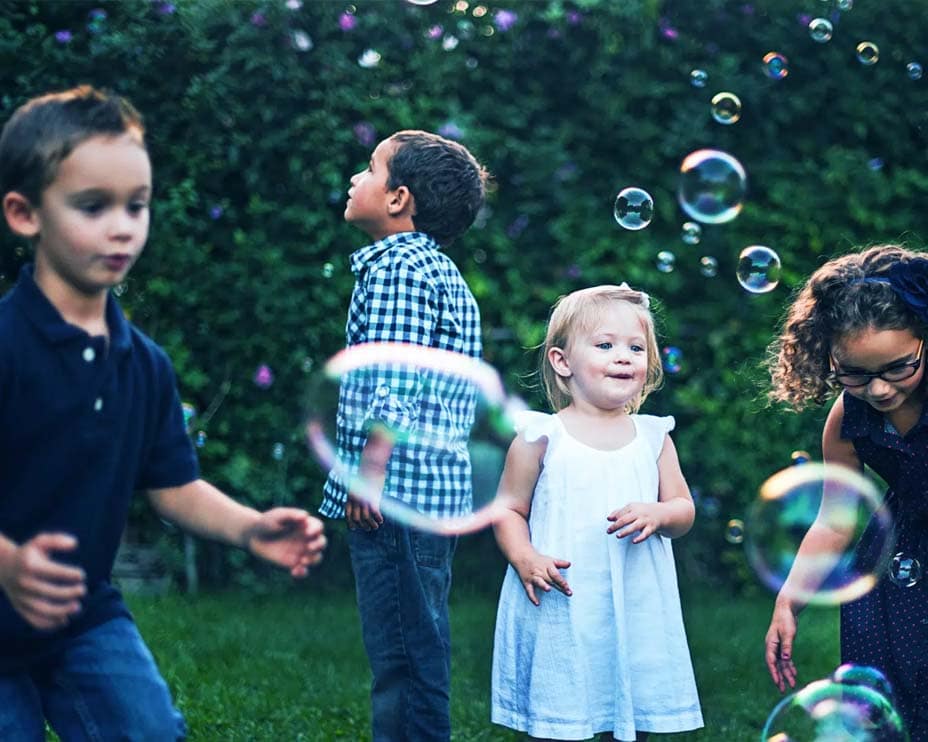Marketing to kids is a sensitive issue. As it should be. The kid segments are easily influenced and don’t have the same qualitative filters as adults do. Kids under the age of eight have an inability to distinguish truth in advertising. Some argue that this means we shouldn’t advertise at all to kids under the age of eight. Others say that as kids and moms will buy products anyway, why not give them the best choices available and a well-informed competition.
In the end, there are kids’ products and just by having a logo, you are, in effect, advertising. Our view on the subject is that choosing and differentiating products and services is a necessary part of living one’s life – whether you’re an adult or a kid. What we choose to buy, we choose because we desire to do so, because it offers us emotional and functional benefits. And if we’re going to consume, why not consume something we can relate to and fits our needs – young or old? Therefore, it’s only logical that we, as marketers, have the proper tools to create more meaningful products for our customers. And as professionals that we use these tools with care and with proper ethical judgment.
Although kids below 15 years of age don’t typically directly buy products, they’re highly influential in what their parents buy for them. Even if you decide not to target kids with your marketing communications, you’ll still want to develop products that are meaningful and valued by the end-users – the kids. Understanding the needs and motivations of kids to develop an effective marketing strategy poses unique challenges. In addition to the ethical question of whether kids should be targeted in marketing, we have a second challenge with kids’ marketing in how we can conduct the proper research.
Why researching kids is different from other research
Beyond the obvious difficulties of access and effective interviewing techniques, there are serious legal restraints that rightfully deny marketers direct access to children as research subjects. Even if it would be possible to interview kids directly or in focus groups, you’d still lack the necessary information to reveal the full picture. They’re simply not able to verbalize all the dimensions of their personality and their underlying preference for one product over another as adults would be able to do. Using moms as a path to understanding their own kids has proven to fall into the trap of mother subjectivity – wishful thinking. In developing our proprietary kids’ marketing methodology, the most successful approach to ‘crack the code’ so to speak has been:
- Studying quantitative academic research on kids’ psychological dimensions
- Having discussions with child psychologists to understand the extremities and motivations behind kid’s behavior
- Using moms to describe the behavior and influencing patterns, not of their own kids but of the friends of their kids
- Partner with school teachers to describe the behavior, influencing patterns, and number of their pupils
- Using shop owners to describe the purchase behavior of kids instore on their own and with their parents
With this methodology, we have the capability to research local markets with the goal of developing a psychographic kids’ segmentation that not only gives us category consumption, but also real insights into who these kids are as human beings. And just like with adults, we can see that some kid segments, depending on the product category, are more important than others.
Kids influence each other and have both direct and indirect influencing patterns. We can therefore develop a strong brand strategy based on science that can inspire a stronger brand communication strategy.
Know your kids
Traditionally we’ve looked at the world of kids using a media-buying model based on what age demographic is watching certain TV shows. We’d buy media for kids 2–11 or, for a premium; we could focus on 6–11, but still a very broad and unfocused target audience. We can do better.
As with all marketing, the critical question becomes: How well do we know our customers as human beings? What about their inner motivations and key drivers to influence a purchase decision by their gate-keeping parent? You may see that your target segment has many friends, but why do they have so many friends? How do they interact with them and what’s the motivation behind their behavior? If you sell FMCG products, you may know that some kids tend to prefer big packages and share with their friends. But why do they share? What’s their motivation behind their need to share? If you know the answers to these and other behavioral and motivational questions, you can do some pretty effective marketing.
So how do we get to know them on a deeper level? The same rules apply to kids’ segmentation as to adult segmentation. If you see your kids only as category customers – for example, as cartoon viewers, or cereal or chocolate customers – you don’t really understand them as full human beings. Yes, they’re little, but they still encompass a variety of different motivations and drivers. You must go deeper into their personality to understand what makes them tick, what makes them happy, what makes them sad, and what are the tension points in their life. Yes, tensions. They have tensions points, just like adults, and understanding these tension points is important.
Age matters
First, let’s start with the obvious. Kids develop extremely fast over the first 15 years. Their personal development follows certain age splits that give us a framework to build a Human Segmentation model within these demographic parameters. According to psychological research, we can split the kid’s life stage 0–15 into four distinct groups that reflect different stages of mental and physical development.

Figure 1. Four Stages in a Kid’s Life
In the age group 0–2, most kids simply don’t have the cognitive capability for brand loyalty and brand awareness. There is some brand recognition already at 12 months, but not much and certainly not enough to defer any motivational impulses.
In the age groups 3–7 and 8–12, distinct brand awareness and influencing patterns develop from kids to parents (most noticeably toward moms) to purchase what they want. We can identify similar psychographic segments in both groups, with variations in size as we move from the younger to the older stage. The difference in execution is just a matter of understanding their daily life and activities and how to relate to those behaviors in a meaningful way.
The age group 13–15 is interesting in the way that they develop from being a child to a teen, but from a marketing standpoint we need to recognize the reality that younger teens always aspire to act like older teens (16–19 years). This means that if you want to hit this group with a message, you target who they want to be – the teens in the age group 16–19.
The iPLAY segments – six distinct kid segments
You know how people say: “Yeah, she was always like that – even as a kid.” That’s it. Our personality is formed at a very early stage. Kids have distinct preferences. Some are introverted. Some are extroverted. Others prefer living in an imaginary world. In the age group 3–12, there is one universal truth among all kids, all over the world: They play. The cultural effect on kids starts immediately from when they’re born, but their natural inclination to play – and how they play – strongly identifies them as distinct segments. In our studies and research, we have developed six differentiated kid segments that are global. They have their own unique psychological profile that can be adjusted to national conditions with local segment validation research.

Figure 2. Six Global Differentiated Kid Segments
These six segments all have distinctly different ways of approaching a situation. The behavioral example that follows illustrates this perfectly. To compare the segments, we used a technique whereby all the kids played the same game of building a bridge from a chair to a table in a typical living-room setting. The statements attached to each segment verbally describe what they did and accomplished.

Figure 3. Approaches Used by the Six Kid Segments
As we can see from this very simple, yet illustrative example, the segments approach the same game with distinctly different behaviors. And this difference in behavior, of course, comes from different drivers and motivations. Understanding these drivers and motivations allows us the capability to create products/brands that are more meaningful to the end-customer (kids).
What kid segments to choose
Depending on the product category, some segments will be more important both in terms of consumption as well as in influencing other kid segments. Just like we can for adults, it is possible to mathematically calculate from the data what segment will have the highest percentage of influence on other kids.
These influencing patterns vary by country and culture, but there are three important variables we consider:
- Category relevance – The segment must be above-average in category
- Brand relevance – The segment must be above-average receptive to the brands emotional and functional
- Influencing relevance – The segment’s definition of the brands core proposition used in the advertising must be able to significantly travel through the kid
The amazing thing about these kid segments, and is true about Human Centric Marketing in general, is in how quickly we can all relate. Reading about these kid segments has an effect on all of us with kids; we almost immediately think about what segment our own kids belong to, or what segment we were when we were kids ourselves. Just like the adult Human Segmentation that follows in the next chapter, the underlying power of Human Centric Marketing is that it’s easy to get, and therefore easier to get everyone from product development to salespeople to act on it an effective way because it deals with people as human beings – what they do and why they do it.
by Kristian W. Majer



